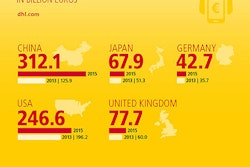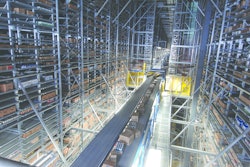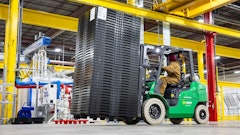
It’s no surprise that Amazon has forever changed the supply chain. From creating a platform that allows any manufacturer to reach any online shopper to transforming expectation for order fulfillment, Amazon almost single-handedly revolutionized consumer notions of commerce. This has subsequently changed the landscape in how the supply chain must conduct business to meet consumer demands. Today, in the wake of the post-revolution business environment spearheaded by Amazon, modern businesses find that they must quickly reevaluate their operations to compete and stay relevant.
As with any significant industry change, there will be organizations that adapt and thrive, and organizations that don’t and risk extinction. And yet, as more businesses evaluate their operations in efforts to come to speed, they’re starting to ask an essential question about their operational practices. In the high velocity e-commerce economy, the question of, “who in the supply chain should fulfill the orders?” is the riddle that will determine who thrives and who doesn’t.
The current thinking in the industry is that retailers or third-party logistics (3PLs) providers should handle fulfillment of e-commerce orders. Retailers make sense in the role because they are selling on their online stores and have inventory in their physical stores. 3PLs could make sense because they are set up to distribute products smaller than a pallet. While there can be situations where both are correct, in general, neither are the right option.
The truth is that manufacturers are responsible for the profitability of their supply chain. This holds even truer when talking about the food supply chain where products have a limited shelf life. The food industry faces this, and more challenges, in the modern e-commerce landscape. And it’s the unique obstacles in the food industry that inhibit the food businesses today from maximizing their supply chain operations. To fully understand the challenges of the food industry, we need to better understand the e-commerce consumer.
Millennials Are Among the Biggest Online Grocery Store Shoppers
Let’s say a consumer wants to buy her favorite brand of gluten-free bread, but her local grocery store doesn’t carry it. Rather than drive all over town looking for the brand, most likely, our savvy consumer is going to look online. This is the way that consumers are conditioned to shop, and it’s influencing how they purchase everything—from their tech toys to their groceries. They don’t have to go to the store; they can shop at their convenience from their office, home or on the go.
And it’s not just millennials who are shopping this way, though they do make up a majority of the current market, and are the most likely to buy food online in the future. Gen Xers and Baby Boomers, too, are continuing to change their purchasing behaviors, opting to buy food online. Market trends seem to indicate that millennials will be buying their groceries from both physical stores and online retailers for years to come, but the next generation of Americans may never step foot inside a grocery store. This is the true post-Amazon landscape that businesses face today.
Picking E-commerce Product Up Front Saves Money in The End
The idea of manufacturers being responsible for the profitability of their supply chain comes from a manufacturing concept: it’s better to find and fix a problem early in the process rather than later in the process when costs have accumulated. That’s why food companies have quality control checks on raw materials; it’s better to find out that an ingredient is bad in its raw form versus finding out when it’s in a finished good.
The supply chain is no different. A manufacturer produces, for instance, a loaf of bread. They then add storage, handling and shipping costs to get the product to the distribution center (DC). The DC then adds storage, handling, shipping costs and profit when it ships to the wholesaler or retailer (who then adds storage, handling and profit to the product to offer for sale to a customer). By the time the product is at the retail location, it has significant costs associated with it. To add on an additional expensive cost of two-day shipping to the end customer, on top of all the accumulated costs, the transaction for a simple loaf of bread becomes unprofitable.
What would happen if the manufacturer fulfilled the e-commerce orders instead? Two-full steps of supply chain handling, storage and profit are immediately eliminated from the cost to serve the customer, which can typically be between 30 and 45 percent of the total cost to fulfill an order. In addition, the customer would get fresher product with more shelf life.
It May Be Scary, But It’s Worth It
While manufacturer direct-to-consumer e-commerce fulfillment makes perfect sense on paper, countless manufacturers have said, “we’re a manufacturer, not a distributor. We ship pallets, not parcels.” Yes, that’s true, and that is how manufacturers have worked for some time. But for most manufacturers, the world has changed. Now, they’re finding that they must as well, and with the right guidance, it isn’t an impossible task.
Let’s once again use our bakery as an example of how a manufacturer can make minor shifts in layout and process to make e-commerce fulfillment profitable. When the loaf of bread comes off the cooling racks, it’s placed in a plastic bag, twist-tied, and put into a case with other loaves of bread. The case is then palletized with other cases, shrink wrapped, and taken to the warehouse for storage. To fulfill an e-commerce order, someone has to walk to the bin location of the bread, cut the shrink wrap, open a case and take a loaf of bread, and walk it to the packaging and shipping area.
Obviously, this method isn’t efficient, and may take away the costs savings from moving the fulfillment to the manufacturer—not to mention, the havoc it will cause with inventory control. Once again, let’s apply our manufacturing concept that fixes the problem when the least amount of costs have been accumulated. The end of the production line (where loaves of bread are bagged and twist-tied) is the perfect place to have the e-commerce requirements moved to a packing station, before packaging and inventory. Instead of 30 pallets of bread packaged in this run, it will be 500 loaves cross-docked to the put-wall and 28 pallets to inventory.
With a new warehouse strategy and a modern warehouse management system (WMS), manufacturers have the ability to continually monitor and dynamically re-calculate replenishment and cross-dock requirements (think artificial intelligence for your warehouse). Workers can be effortlessly directed exactly to be most efficient for both wholesale orders (pallets) and e-commerce orders.
Everyone Wins!
For manufacturers, being able to efficiently and profitably fulfill e-commerce orders is good business in three key ways:
- Efficient operations and effective inventory control improves organizational profitability.
- Improved relations with retailers, as they don’t compete for online orders or have to fulfill orders placed from retailers’ online stores.
- Increased market share by profitably solving the supply chain “riddle” to e-commerce fulfillment.
Improving operational efficiency and inventory control essentially boils down to reducing (or eliminating all together) redundant or wasteful steps. For our bread manufacturer, having an improved manufacturing process, and a WMS that monitors and continually optimizes the entire operation, maximizes the efficiency of warehouse workers. To be able to rely on systems and processes makes warehouse worker performance less reliant on experience. Systematizing the warehouse further makes new and temporary hires nearly as efficient as experienced workers, subsequently creating a more scalable and profitable organization.
Manufacturers also benefit from a co-dependent relationship with retailers. The two pieces needed to make e-commerce successful are a good shopping/buying experience and smooth order fulfillment. Most manufacturers do not want to become retail giants, so manufacturer fulfillment removes one aspect of the equation and allows retailers to focus on creating the best online experience for their customers. As manufacturers hold up their end by handling e-commerce fulfillment, their retail customers will have generated revenue without ever having to touch the product.
When manufacturers can fulfill e-commerce orders profitably they want to encourage retailers to sell more product. Let’s say the manufacturer eliminates 30 percent of the cost to serve by fulfilling e-commerce orders directly. Then, the manufacturer can offer discounts or promotions to retailers to highlight their product on their e-commerce store. They’ll also be able to offer customers discounts on the product that competing products can’t offer. Equipped with the lowest cost to serve, the modern manufacturer will be able to take market share from the manufacturer who refuses to change.
But food manufacturers have some unique challenges that other consumer packaged goods manufacturers don’t have.
A main focus for food manufacturers is keeping up to date with food safety and quality concerns. Modern ERP and WMS solutions understand and help comply with these requirements, supplying solutions for everything from expiration date tracking to quality hold issues. For example, if a consumer ordered a loaf of bread and by the time she received the bread it had one day left until it expired, she’d probably be disappointed and dissatisfied. Modern WMS solutions can determine which product lots to ship to meet corporate objectives of remaining shelf life to customer.
The Bottom Line: Creating Profit in Servicing E-commerce Customers
Shopping and consumer behavior is changing on a global scale. Taking advantage of this opportunity requires manufacturers to rethink their warehousing and fulfillment approach. Modern manufacturers have got to change their mindset from “ship out as much as we can by volume” to “I am responsible for profitability of product in the supply chain and e-commerce each pick is a growing demand in the market.”
While some manufacturers might aim to change their business model to sell directly to consumers, food manufacturers can build a stronger retail distribution channel if they protect their retailers and their margins. This partnership will achieve a higher profit margin for manufactures and helps retailers sell your product on their online stores.
However you slice it, food manufacturers finally have the technology and insights to take advantage of the e-commerce opportunity. Through the right strategies and deployments, manufacturers can lead a scenario where retailers, consumers, and manufacturers all win. In the end, manufacturers get more profits, stronger retailer and customer relationships, and market share gains. Retailers lower e-commerce fulfillment costs while satisfying or even exceeding customer expectations, who are now getting the freshest produce possible.
Amazon may have revolutionized the supply chain, but this is just the beginning. Companies who embrace e-commerce and supply chain opportunities of today are perfectly positioned to adapt and thrive no matter the challenges that they may face tomorrow.




















